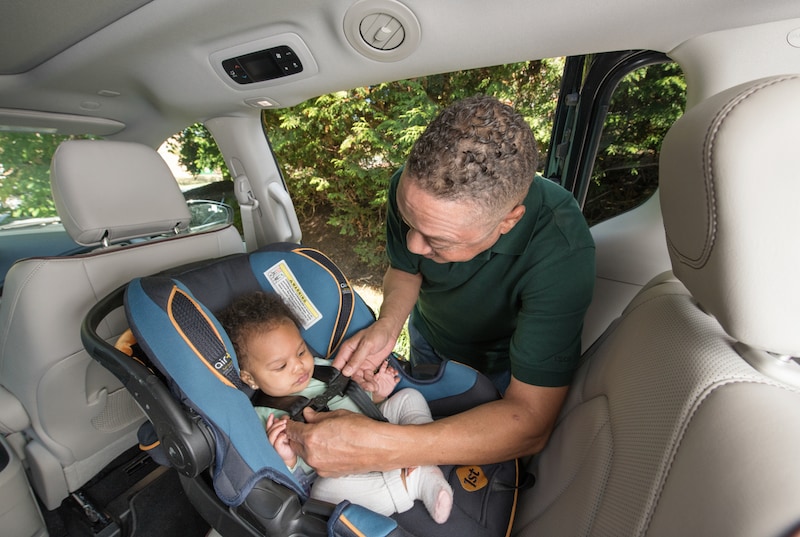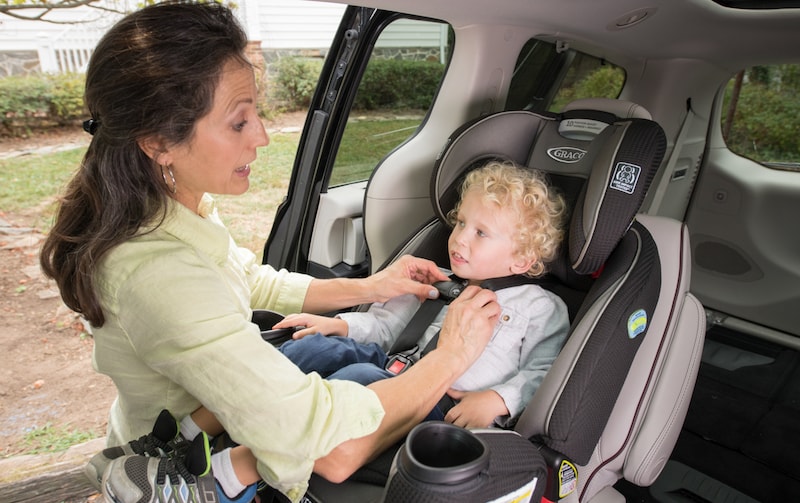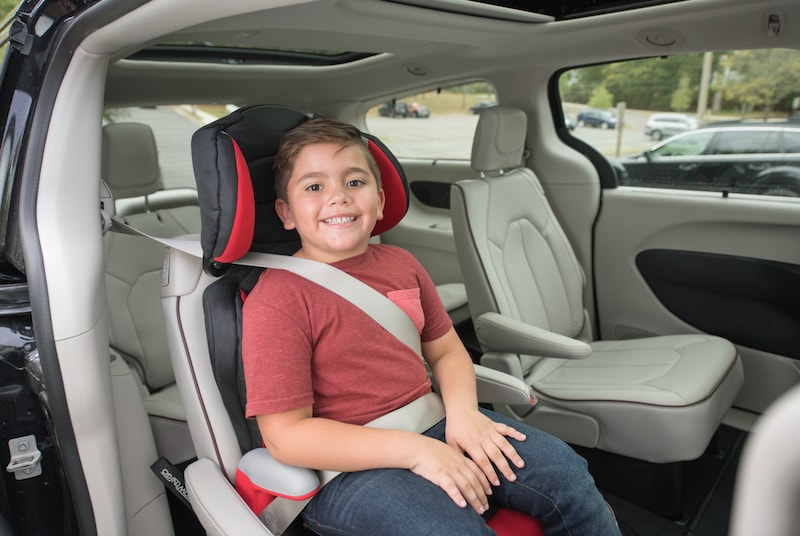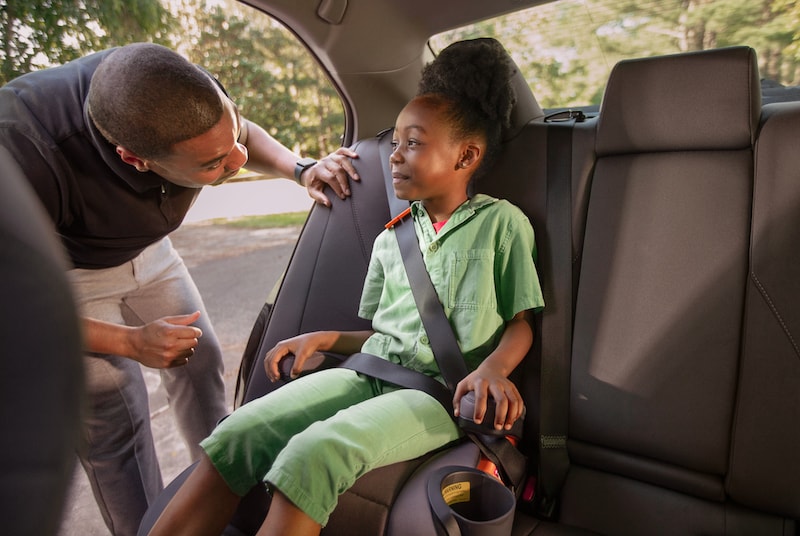In this article
Embarking on a search to find the right car seat is pretty much a guaranteed way to make a person’s head spin. Not only is there a seemingly endless number of models, types and features, car seats are directly linked to a child’s safety, so it’s a product parents and caregivers want to get exactly right. (No pressure there!) But where to even begin on this oft-confusing journey?
“There are a number of things to think about when purchasing a car seat, but, first and foremost, you need to determine which type is meant for your child’s age and size,” says Dr. Amna Husain, a board-certified pediatrician in Apex, North Carolina. “After that, parents and caregivers can factor in things like budget, preferred safety features, your family’s travel habits (will you need a car seat on a plane?) and whether there’s an older sibling who still needs a car seat or can move up to a booster.”
While the height and weight limits can vary among models, when it comes to the different types of car seats for different ages, parents and caregivers should follow certain general guidelines.
Key takeaways
- Choose a car seat based on your child’s age and size, and sometimes, maturity level.
- Keep kids rear-facing until at least age 2 for safety.
- Always follow manufacturer guidelines for proper use.
Here’s the rundown on car seat stages:
Car seat weight chart and general guidelines*
| Type of seat | Weight | Modes | Age group |
| Infant car seat | Approx. 4-30 lbs. | Rear-facing only | Infants to at least age 1 |
| Convertible car seat | Rear-facing: Approx. 4-40 or 50 lbs. Forward-facing: Approx. 22-65 lbs. | Rear-facing (until 2 years or more) and forward-facing | Infants to school-aged kids |
| All-in-one car seat | Rear-facing: Approx. 4-40 or 50 lbs. Forward-facing: Approx. 26.5-65 lbs. Booster: Approx. 40-120 lbs. | Rear-facing, forward-facing and booster | Infants to school-aged kids |
| Combination car seat (also called: harnessed boosters) | Approx. 26.5-65 pounds | Forward-facing only and can be used with a harness or belt-positioning (seat belt). | School-aged kids (some seats may have an age minimum) |
| High back booster | Approx. 40-110 or 120 pounds | Forward-facing only | School-aged kids (some seats may have an age minimum) |
| No back booster | Approx. 40-110 or 120 pounds | Forward-facing only | Older school-aged kids (some seats may have an age minimum) |
* General guidelines only; age, height and weight limits can vary among car seat models.
Infant car seat

Age: Infants to at least age 1
Weight: Approx. 4-30 pounds
Infant car seats are rear-facing-only and have a separate base they click into, making it easy to take it — and baby — in and out of the car. There’s a carrying handle attached to infant car seats, and they usually have the option to connect to different strollers or travel systems, which makes going from vehicle to stroller virtually fuss-free.
“I’ve always found Infant car seats to be the most convenient” says Michele Lee, a mom of two in Garwood, New Jersey. “Since kids should never wear a coat in a car seat, I loved that with infant seats, I could strap my babies in and get them warm with a car seat cover before going out into the cold. They’re also great for popping into a stroller and going for a walk if baby has fallen asleep.”
According to Sarah Haverstick, a safety advocate and child passenger safety technician and instructor for Cybex and Evenflo, most infant car seats can be used from 4 to 30 pounds. “Infant car seats are used from birth until at least the child’s first birthday, depending on when a child reaches the size restriction for the seat,” Haverstick says. “That said, many infants will outgrow the allowable length for the infant car seat before they max out the weight rating.”
Convertible car seat

Age: Infants to school-aged kids
Weight: Approx. 4-65 pounds
“Convertible car seats are bigger, bulkier and meant to stay in the car,” explains Husain. “Many convertible car seats have infant inserts, which can safely harness a baby as small as 4 pounds, but children absolutely need to be rear-facing until they’re at least 2.” The American Academy of Pediatrics (AAP) advises keeping kids rear-facing in car seats until “2 years or more,” suggesting parents and caregivers don’t switch the seat forward until the “highest weight or height allowed by their car safety seat manufacturer” has been met. “Keeping kids rear-facing is very important, as crash forces are less intense to the greatest-risk parts of the body while in this position,” notes Husain.
Unlike infant car seats, convertible car seats can be installed rear- or forward-facing, making them a more versatile and longer-lasting option for families. But keep in mind, you can’t conveniently take them out of the car and click them into a stroller base.
“Convertible car seats can be used from birth, but are generally the next step following an infant car seat to allow a child to remain rear-facing longer in the vehicle,” says Haverstick. “In rear-facing mode, most convertible car seats start around 4 pounds and max out at between 40 and 50 pounds. Starting June 30, 2025, the required minimum starting weight for forward-facing mode is 26.5 pounds. This change is in an attempt by National Highway Traffic Safety Administration (NHTSA) to get more 1-year olds to remain rear-facing longer.”
All-in-one car seat

Age: Infants to school-aged kids
Weight: Approx. 4-120 pounds
All-in-one car seats are the longest-lasting and most versatile convertible seat option, offering rear-facing, forward-facing and booster modes. Like regular convertible car seats, they can be used from birth, but can also be the next step after an infant car seat. (Keep in mind, though: All-in-one car seats remain in the car.)
“In rear-facing mode, most all-in-one car seats start at around 4 pounds and max out between 40 and 50 pounds,” says Haverstick. “In forward-facing mode, most start around 22 pounds and max out at 65 pounds, and in booster mode, these car seats usually start around 40 pounds and max out around 120.”
Combination car seat

Age: School-aged kids
Weight: Approx. 26.5-65 pounds
A versatile car seat for older kids is a combination car seat, which, while forward-facing only, can be used with a harness and in a belt-positioning (seat belt) booster mode. (In some cases, combination car seats offer high back and no back booster mode.) “These seats are sometimes simply referred to as harnessed boosters,” says Haverstick.
Haverstick also notes that, similar to forward-facing all-in-one seats, combination car seats include an age minimum as well in order to encourage keeping children rear-facing for as long as possible. “Also, before using the belt-positioning mode, make sure the child is mature enough to understand how to use the vehicle’s lap and shoulder belt for restraint,” she says.
High back booster

Age: School-aged kids
Weight: Approx. 40-120 pounds
In addition to featuring adjustable headrests that make it easier to fit the vehicle’s shoulder belts properly, high back boosters raise the child up so that your car’s seat belt can fit and restrain them appropriately. “The seat belts in your vehicle are designed for adults, not children,” says Haverstick. “So this additional boost is necessary to place the lap and shoulder portions of the belt on the strongest parts of the child’s body.” According to Haverstick, the lap belt should fit low on the upper thighs/hips, and the shoulder belt should fit midway across the child’s shoulder.
“Most high back booster seats start at 40 pounds and max at 110 to 120 pounds,” Haverstick explains, adding that many booster seats also provide a minimum age requirement since booster seats “require a level of maturity that isn’t necessary for a harnessed car seat.”
“All booster seats have a 40 pound minimum,” she says, “and brands may include a minimum age requirement as well.”
High back boosters are a great option when first transitioning a child to a belt-positioning booster since they provide better positioning of the shoulder belt than a backless booster, according to Haverstick. Also, if you have a car that does not have a headrest — something that’s fairly uncommon in newer vehicles, but still present in older cars — high back boosters, many of which have side support, or “wings” at the top of the seat, are necessary to provide head and neck protection. One study found that children were 70% less likely to be injured if they were in a high back booster as opposed to a seat belt. And that same study concluded that children in backless boosters were almost just as likely to be injured in a crash as if they were wearing a seat belt alone.
No back booster

Age: Older school-aged kids
Weight: Approx. 40-120 pounds
No back or backless booster seats simply raise the child up so the seat belt fits properly. Backless boosters are compact and easy to store, making them a great option for vehicle travel following an airplane trip or to have on hand for frequent carpools with other booster-aged kids.
“Most backless booster seats start at 40 pounds and max out between 110 and 120 pounds,” says Haverstick. “And again, many booster seats also provide a minimum age requirement for their product.” (For Evenflo, she says, it’s a minimum age of 5.)
While each car seat type has general size ranges, again, it’s important to check your specific model’s requirements. The AAP has a great, comprehensive list of car seat makes and models, along with their height and weight limits, which is great for easy referencing before or after purchasing a car seat. And for parents and caregivers who want to know the type of car seat their child should be using before buying, the NHTSA has an interactive chart that will show the right car seat for your child, based on their age, height and weight.





